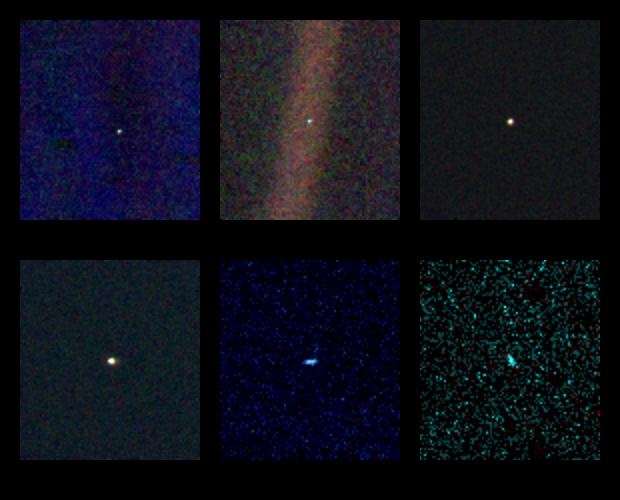
On February 14, 1990, after nearly 13 years of traveling the outer solar system the Voyager 1 spacecraft passed the orbit of Pluto and turned its camera around to take a series of photos of the planets. The image above shows those photos, isolated from the original series and labeled left to right, top to bottom.
From that distance, over 4 billion miles from the Sun, the planets each appear as little more than a bright dot against the vastness of interplanetary space. And Voyager was still a long ways off from reaching the “edge” of our solar system, the bubble of energy emitted by the Sun in which all of the planets, asteroids and comets reside. In fact, Voyager 1 still has another five years to go before it crosses that boundary and truly enters interstellar space.
“That’s here. That’s home. That’s us. On it everyone you love, everyone you know, everyone you ever heard of, every human being who ever was, lived out their lives. … There is perhaps no better demonstration of the folly of human conceits than this distant image of our tiny world.”
– Carl Sagan
It was the unique perspective above provided by Voyager 1 that inspired Carl Sagan to first coin the phrase “pale blue dot” in reference to our planet and in the title of his book. And it’s true…from the outer solar system, Earth is just a pale blue dot in the black sky, just another light in the dark. It’s a sobering and chilling portrait of our world…but inspiring too, as the Voyager 1 and 2 spacecrafts are the furthest man-made objects in existence. And getting further every second. They are still transmitting data back to us, although faintly, as they are very far now…almost 10 billion miles away. (Update: Voyager 1 is currently 17,422,962,000 km (10,826,126,670 miles) away from us…that’s over 116 times the distance between the Sun and Earth. It is the most distant manmade object in existence.)
And who says long-distance relationships can’t work? 😉
Read more about the Voyager spacecraft here.
Image: NASA
Originally posted on February 12, 2010. Read on LightsInTheDark.com
No better Valentine’s gift than to give us a little perspective on ourselves!
LikeLike